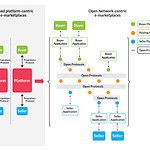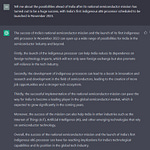Antariksh Matters: Starlink & the Dismal Attractions of Space Warfare
— Aditya Ramanathan
The contributors to this newsletter are not an unduly pessimistic lot. They nevertheless retained little doubt that geopolitical adversaries would seek to contest each others’ ability to use space-based assets. What was harder to predict was that we would see its first instances as early as 2022. It was also harder to imagine that some of these dangers would draw public attention because of a sordid spat over money.
Over the last few weeks, Elon Musk, the founder of SpaceX, which runs the Starlink constellation, has been engaged in a public argument with diplomats, reporters, and assorted opinion-makers. He’s been pilloried both for his unsolicited comments on the Russia-Ukraine war, and over reports that his company sought compensation from the US government for providing the Ukrainians with Starlink services.
Starlink’s satellite Internet services have proved crucial to Ukrainian military operations against Russia. But the story of how it became crucial to the war effort is an unusual one that involves many of the preoccupations of this newsletter: social media, private space companies, cyber attacks, remotely piloted platforms, and space warfare.
Musk began despatching Starlink systems to the war zone following a tweet from a Ukrainian politician. Starlink systems directly enabled lethal strikes on Russian forces, many of which involved the use of drones. With no formal agreement in place for the use of Starlink in combat, Musk’s company apparently sought substantial US Department of Defense financial support, with some accusing him of price gouging. Through all this, Russian forces attempted to disrupt Starlink services through electronic warfare. It is this last phenomenon that the remainder of this Technopolitik entry will focus on.
Space Warfare is Difficult
The Russians were always keenly aware of the value of satellite communications. According to US officials, they mounted a successful cyber attack on the operations of Viasat at the outset of the war. The attack targeted Ukrainian military communications and disrupted Internet services for many civilians. It also had collateral effects beyond Ukraine’s borders, most notably, disrupting the functioning of 5,800 wind turbines in Germany (see the entry from my colleague Pranav for more on this).
Once the Ukrainians began making extensive use of Sarlink services, the Russians reportedly mounted an electronic warfare (EW) attack that SpaceX quickly repelled. Musk acknowledged this on Twitter by saying SpaceX had temporarily “reprioritized to cyber defense & overcoming signal jamming”
The exact nature of these Russian attacks are not clear. Musk’s own tweets only add to the confusion. Were they simply electronic jamming attacks? Or did they include a cyber component? It is also unclear if Russia has limited itself to electronic jamming near the Earth’s surface or if it also attempted to jam the satellites themselves. After all, Russia has a mobile ground-based platform called the Tirada-2 for precisely this purpose. What is significant is that despite reports of outages, Starlink is not known to have suffered a setback similar to that of Viasat.
Russia’s Dilemmas and Incentive to Use Space for Military Purposes
For Russia, Starlink is a problem from hell. Legally, Starlink is probably fair game for Russian forces, since the satellite constellation is providing direct combat support to the Ukrainian military. However, the fact that it is owned by a third-party, and the fact that the third party happens to be American effectively limit Russian options.
Also limiting Russia’s options are the sheer number of Starlink satellites. There are more than 3,000 of these tiny satellites presently in orbit. About 400 provide service to Ukrainian forces. While Russian direct-ascent antisatellite (DA-ASAT) missile would short work of a single Starlink satellite in low earth orbit (LEO), Moscow would run out of missiles if it tried to attack the whole constellation and would likely make no serious dent on Starlink operations.
In the years to come, SpaceX plans to have up to 42,000 Starlink satellites in orbit. Even if it achieves only a quarter of this number, SpaceX would have dramatically increased the number of satellites in LEO. With rivals such as OneWeb also developing their own LEO constellations, the orbits are not only likely to get crowded but also become valuable real estate for strategic purposes, providing a sanctuary for military support systems.
Indeed, if space were to remain a sanctuary, as some hope it does, it would only further incentivise states to use space for military purposes. This, in turn, is likely to increase competitive pressures back on Earth to find novel ways of contesting an adversary’s use of space. Starlink has given us an unexpected glimpse of the dilemmas that lie ahead.
Matsyanyaaya: What’s Technological Sovereignty Anyway?
— Pranay Kotasthane
In recent years, technological or digital sovereignty has been all the rage. Not only is it a term meant for government strategy documents, but an empirical reality and public policy, as witnessed most recently in the US export controls on China’s semiconductor industry.
And yet, we know little about what the term means. Poor-quality arguments mistake autarky for technological sovereignty or, worse, as a mission that should be achieved by a particular date rather than as a continuing process.
And how do you even square technological self-sufficiency with the reality that the technology ecosystem is a multinational effort and not merely about creating national champions, as in the past? As I wrote in the third edition of this newsletter:
There are significant problems with the goal of high-tech self-sufficiency and the instrument of industrial subsidies, both. That's because high-tech industries today rely on extensive cross-border movements of intermediate products, talent, and intellectual property. As R&D costs required to produce technological improvements have risen across sectors, erstwhile 'national' industries have been transformed into global supply chains. Instead of national champions making complete products independently, companies only specialise in specific parts of global supply chains.
And so, while searching for a better definition of technological sovereignty, I landed on a crisp CESifo paper titled Technological Sovereignty as Ability, Not Autarky by Christoph March and Ina Schieferdecker.
This paper uses our understanding of what it means to be politically and economically sovereign, to construct a definition of technological sovereignty. Their framework assessing the impact of General Purpose Technologies on political, economic, and individual sovereignty, is a foundational contribution.

Then, they go on to define technological sovereignty as follows:
In a narrow sense, technological sovereignty is the ability to make self-determined decisions about the development and use of technologies and technology-based innovations, especially regarding their properties (e.g. energy consumption, data usage, security, or safety) and their terms of use (e.g. restriction to certain domains, or transparency). In a broader sense, a polity is technologically sovereign, if it possesses the technological abilities necessary to maintain political and economic sovereignty.
Describing technological sovereignty as an ability opens a new window for understanding the concept. This approach places innovation policy, technology transfer, and education at the front and centre.
Crucially, this definition recognises the global superstructure of innovation and distances itself from self-sufficiency:
The ability to understand, advance, or produce new technologies must not be confused with the attempt to actually do so in all key enabling technologies and/or components. Instead, we understand it as a widening of choice opportunities, and as a prerequisite for international trade “on eye level”. Moreover, we see capacities to innovate as a key to achieving technological sovereignty.
In another section, the authors go one step further and identify the interdependence between international trade and technological sovereignty. While the simplistic arguments position these two concepts as opposites, the authors argue that the two reinforce each other.

I encourage readers to read the entire paper. Papers such as these are critical for building the epistemological foundations of technology geopolitics.
Cyberpolitik: Browser Wars, again?
— Bharath Reddy
Firefox maker Mozilla’s recent report highlights how manufacturers of operating systems use market power and choice architecture to favour affiliated browsers leading to outcomes which are not in the best interest of users.
Mozilla’s research finds that “software can be designed to influence or even manipulate consumer outcomes. And operating systems are designed to maximise usage of their affiliated browsers.” Of the 4.2 billion mobile internet subscribers globally, roughly 72% run on Android and 27% run on iOS. The browser usage on these devices shows a strong preference for the default browser, with 65% of users on Chrome and 24% on Safari.
Having a competitive playing field for browsers is in the best interest of users. The competition fosters innovation leading to better quality, security and privacy for users. When Internet Explorer was the dominant browser after crushing Netscape, innovation had taken a backseat with no significant upgrades for five years. Firefox entered the scene with better speed, security and new features such as tabbed browsing. This created more competition in the browser market with more frequent updates.
Browser engines are another major area of concern. Currently, only Apple, Google and Mozilla develop and maintain browser engines. Since Apple’s Webkit engine is limited to apple devices, it leaves only Google’s Blink engine and Mozilla’s Gecko engine as the only cross-platform options. Having such a critical access point for the web in the hands of a single company not only leads to a lack of innovation but could be a major privacy and security risk for users.
The current situation has come about largely due to operating systems providers using elaborate choice architecture to encourage desired outcomes. The choice of architecture includes:
- having pre-installed browsers bundled with the OS
- prohibiting or overriding changing to the defaults
- using dark patterns to nudge users against changing the defaults.
Other measures include having contracts that mandate OEMs to have only affiliated browsers pre-installed on the devices. App store restrictions, such as Apple’s current ban on alternative browser engines, also play a big role. Similarly, features such as in-app browsing are only possible on Android using the Blink engine.
As we move towards wider adoption of smart devices, virtual reality, and autonomous vehicles, browsers might be tightly bundled with all of these applications. Mozilla’s report highlights how competition in the browser market is necessary to advance innovation, performance, speed, privacy and security and calls upon regulators, policymakers, and lawmakers to create a new era.
Our Reading Menu
[Podcast] Escalation in the US-China Tech War by Pranay Kotasthane and Pranav Satyanath.
[Book] Great Power Politics in the Fourth Industrial Revolution: The Geoeconomics of Technological Sovereignty by Glenn Diesen.
[Report] The War in Ukraine from a Space Cybersecurity Perspective











Share this post